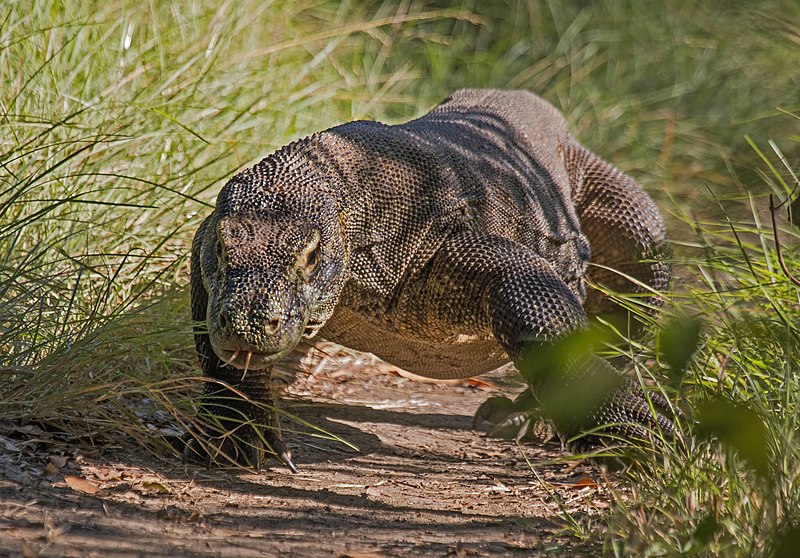Venture into the Indonesian archipelago, and you’ll discover a creature that has fascinated human minds for centuries: the Komodo dragon. Not just a mere lizard but the world’s largest. Its lineage is deeply rooted in Earth’s history, belonging to the Varanidae family, which can trace its origins back to prehistoric times, even to the era of dinosaurs.
Adaptation: The Survival Game
In a world where only the fittest survive, the Komodo dragon is a testament to evolutionary brilliance. Over the years, they’ve developed unique attributes that stand out in the animal kingdom. Their thick, rough skin, densely covered in osteoderms, serves as a natural armour. Their formidable size and strength make them apex predators in their respective ecosystems.
The Realm of the Komodo Dragon
Although they have a limited range, Komodo dragons are indigenous to specific islands in Indonesia, like Komodo, Rinca, and Flores. Their restricted habitat has led to fascinating variations among populations, allowing scientists a peek into evolution at work. Furthermore, on these islands, the dragons dominate as the apex predators, unrivalled and unchallenged. You can explore their natural habitat by charting a boat trip from Bali.
A Connoisseur of Carnage
What they eat is as intriguing as where they live. Komodo dragons are carnivores through and through. Their saliva contains a unique set of bacteria that plays a pivotal role in breaking down their prey. Opportunistic feeders they’ll consume a varied diet—birds, mammals, and surprisingly, even members of their own species.

The Dragon’s Sixth Sense
Their sensory organs are exceptionally developed. Komodo dragons possess a specialized sensory organ, Jacobson’s organ, enabling them to pick up chemical cues from their surroundings. This uncanny ability to sense even the smallest changes in their environment provides them an unparalleled advantage while hunting.
Social Dynamics: Not Just Solitary Predators
These creatures are not just ruthless hunters; they possess a social side too. Contrary to what many might think, Komodo dragons communicate with each other. A series of hisses, body movements, and even group activities like communal nesting showcase their complex social dynamics. While generally territorial, there are instances where they share hunting and feeding areas, leading to an intriguing social construct within their populations.
A Risky Encounter
Human interaction with Komodo dragons has its share of risks and rewards. While their unique physiology and behaviours make them a popular scientific subject, their potential danger is ever-present. It’s essential to approach them with caution, given their capabilities as apex predators.
The Race Against Time
The Komodo dragon’s status is increasingly precarious, currently labelled vulnerable by the International Union for Conservation of Nature (IUCN). Conservationists are racing against time to protect these magnificent creatures. Initiatives like captive breeding programs, habitat restoration projects, and educational outreach are in full swing to preserve this ancient species for future generations.
Komodo Dragon in Pop Culture
This awe-inspiring creature has cemented its place in popular culture as well. From documentaries to blockbuster films and from mythological tales to children’s storybooks, the Komodo dragon continues to inspire. It’s as if the creature bridges the realms of scientific curiosity and imaginative storytelling, captivating minds young and old.
An Enduring Legacy
The Komodo dragon is a marvel of evolution, showcasing a fascinating blend of physical prowess, adaptive genius, and social complexity. As we continue to study and strive to protect this remarkable creature, we unearth ever-more enthralling details about its life, origins, and the intricate role it plays in the ecosystem.